
Small businesses and local approaches to loyalty programs
Many companies like to bestow titles on their customers. This is even more prevalent for companies that have loyalty programs. Titles like members, guests, VIPs and many more have the opportunity to join clubs, circles, rooms, etc. This creates a sense of belonging and exclusivity that may be gained from joining these programs.
One of the more contentious titles is that of a “family member”. A family has different connotations for different people. For a small business that is family-owned, having someone “join the family” might seem like a warm invitation that hints at inclusion, friendliness, and benefits. For many, however “joining a family” doesn’t evoke the most meaningful of responses especially when that “family” is selling liquor.

Bayfield’s promote themselves as “The local, independent family business taking it up to the big guys!”. This proposition works for the business and stirs up feelings of community pride, local support, and entrepreneurial spirit. How does this translate into their loyalty program?
Join the Bayfield Family
It is simple to join via the website or QR code on their catalogue. The benefits of joining are clearly listed.

The image of three men holding beers above the “$10 off your first online order” is unsettling. It is not clear whether these three gentlemen are the owners of the business or whether they are meant to represent Bayfield’s customers. Instead of enforcing the reasons to join the program, the imagery stirs up visions of middle-aged men sitting in a pub probably drinking too much, too early.
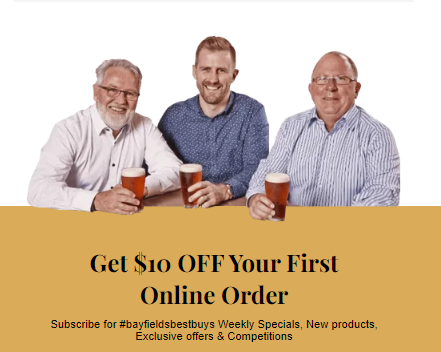
A digital membership card is provided once you join the program for ease of access. From a branding perspective, joining a liquor store’s loyalty program and having the membership type displayed as a “family” membership just feels wrong. There is also a miscellaneous “draw entry 1” displayed even though no draw was mentioned or entered.
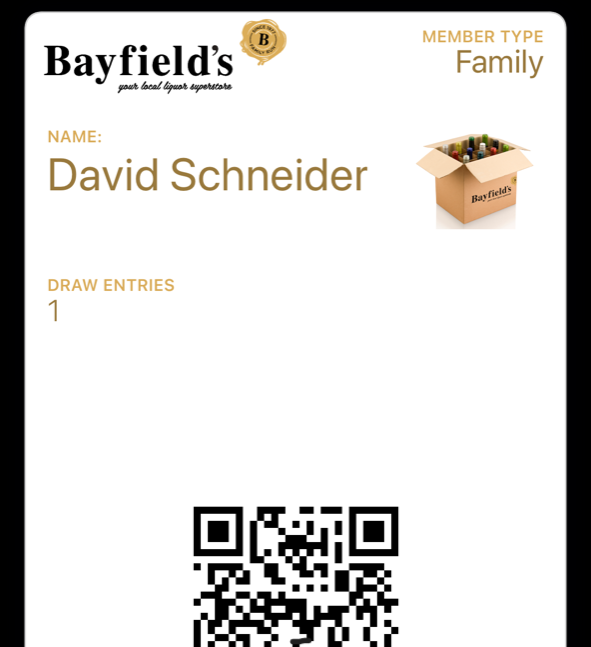
The member account
The first piece of communication after signing up is an email welcoming you to Bayfield’s. The member is encouraged to access the My Account section of the site. The salutation used is “Hi 04XXXXXXXX,” which is reflective of the member’s mobile number used to sign up. No loyalty program member wants to be referred to as a number.
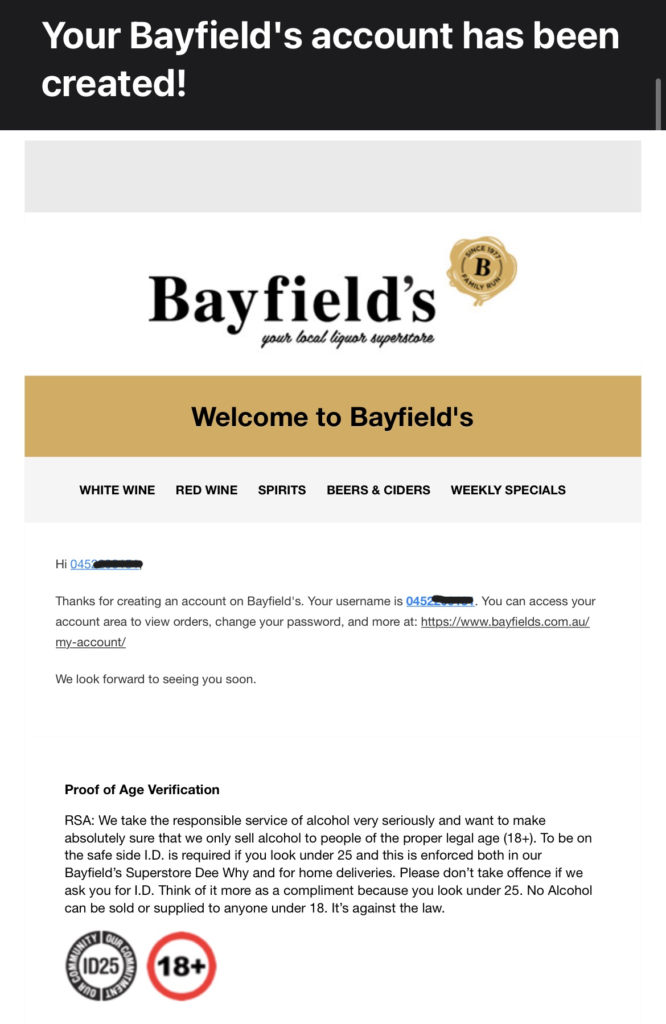
Unfortunately, when logging in to the member account there is no immediate utility for new members. You have a similar image of the three gentlemen seen during the join process as the header image of My Account and at the footer of the page, they appear above the same “$10 off offer” seen during the join process. There is no personalisation, and you are again referred to as your mobile number.
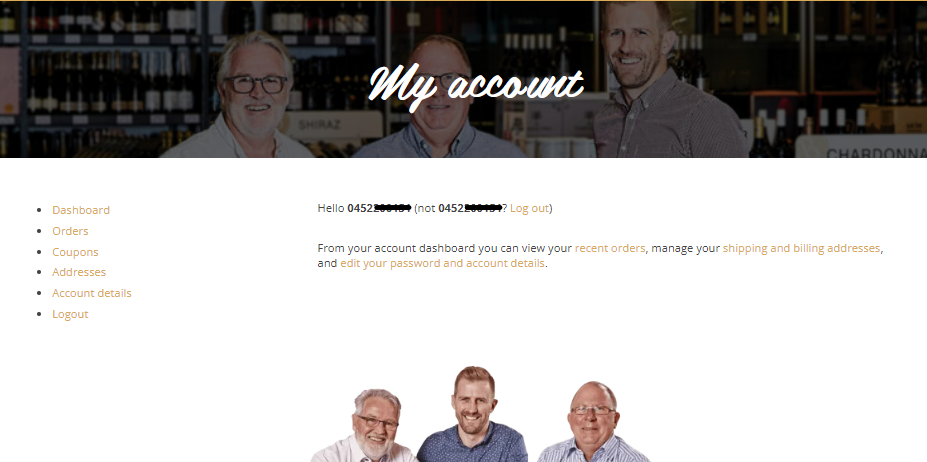
Visiting the Coupons section of the member account awards the member with a message “Sorry, no coupons available for you.” which is a very poor experience for a new member.
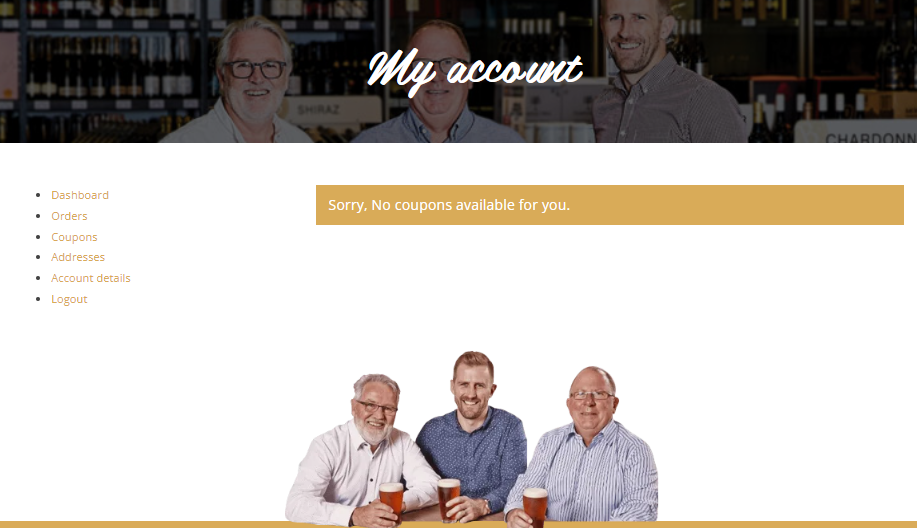
There is no sign of where to find early access to new catalogue releases, member exclusive offers or invitations to member-only tasting events promoted as part of joining. These might form part of future communication but the member account overall is underwhelming and unlikely to attract repeat visitors.
What else does the family have to say?
There is the ability to sign up for #bayfieldsbestbuys which is a newsletter containing weekly specials, new products, exclusive offers and competitions. Signing up for the newsletter and loyalty program are independent of one another. The loyalty program sign-up process does not talk about the newsletter at all which is a missed opportunity for data collection and engagement.
On successful sign-up to the newsletter, you receive a welcome email that is much more welcoming than the one received when signing up for the loyalty program. A code is provided to receive $10 off the next purchase. In the footer of the email there is an invitation to join the loyalty program.
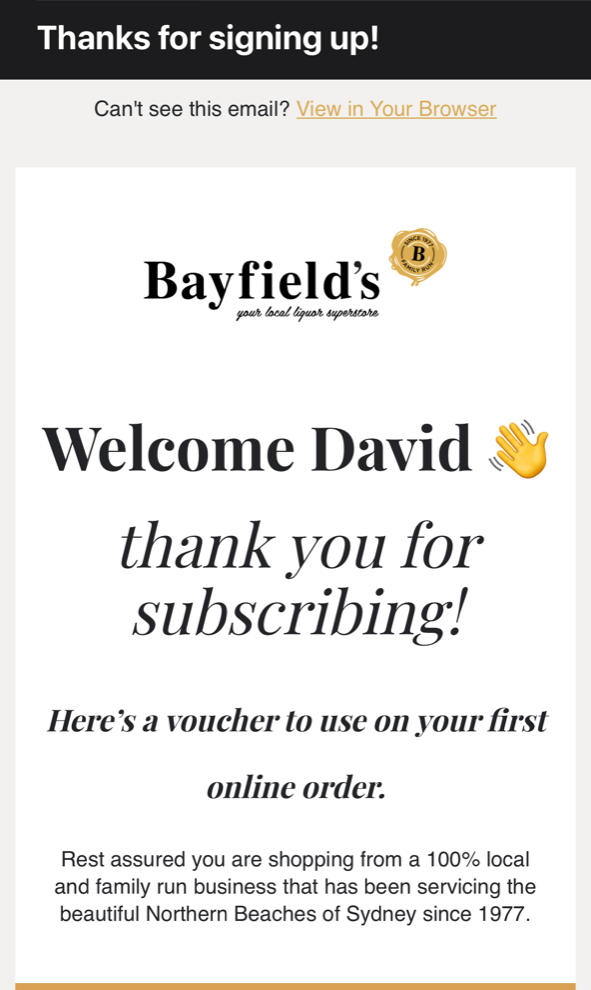
The first catalogue email received clearly shows the members’ pricing and the non-members’ pricing. The first clear and valuable benefit to joining the program.
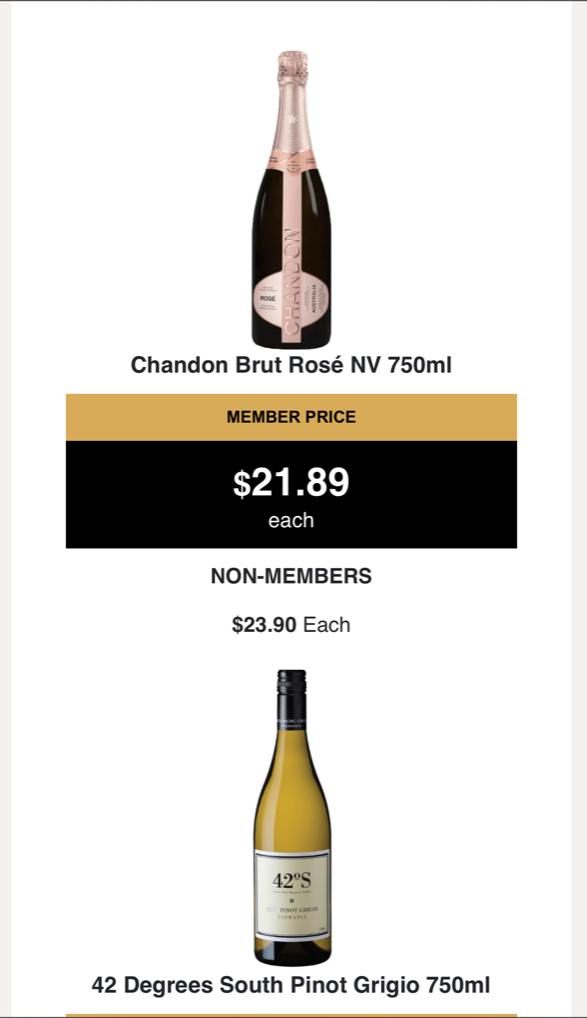
Potential improvements
Even though the business is small, there are things they could do differently with their loyalty program to increase their share-of-wallet.
- Addressing the overall branding of the program, digital card and messaging. Clear up the distinction between signing up for the newsletter versus signing up for the loyalty program. Make the members of the program feel valued for joining and employ further personalisation.
- Ensure the benefits and perks are reinforced and delivered to members who have just joined.
- Improve the offers and rewards. An effective example is a sign-up bonus for new members to redeem within 30 days of joining the program. This would ensure the coupon section is not empty when joining. Another example could be a simple referral offer for members.
- Increase the utility of the My Account section. As the membership hub, it should have more engaging content and reasons to return. Allow for preferences to be updated or additional profile-building information to be shared.
The biggest benefit to joining the program is the savings that members are eligible for. The value alone is enough to join and engage with the program to some extent, but it doesn’t feel like enough to make a consumer choose to shop at Bayfield’s over a competitor.
A local program should not mean a low quality program
Bayfield’s fails to evoke the right kind of emotional response from members. This is critical for brands that wish to achieve a deeper level of customer loyalty. The rest of the program feels underwhelming. There is more that could be done to engage their members, drive transactions, and acquire new members. While they are not a national retailer, they could benefit from some light competitor analysis from the likes of Dan Murphy’s or BWS for inspiration.
Granted, the latter examples are national retailers but operating as a small business should not mean sacrificing the quality of the loyalty program. In this instance, the Bayfield’s family could learn a lot from their cousins in the industry.

David Schneider is a Senior Strategy Consultant at Loyalty & Reward Co, the leading loyalty consulting agency. Loyalty & Reward Co design the world’s best loyalty programs for the world’s best brands. He has an agency background specialising in CX and data-driven communication and has worked on loyalty and lifecycle programs across multiple industries both in Australia and the US.
David applies his skills across all aspects of the business with a customer-centric approach to loyalty program design. He has a deep understanding of best practice collection and use of data and uses this to inform loyalty program strategy and member lifecycle communications to deliver the most value.
Connect with David on LinkedIn
